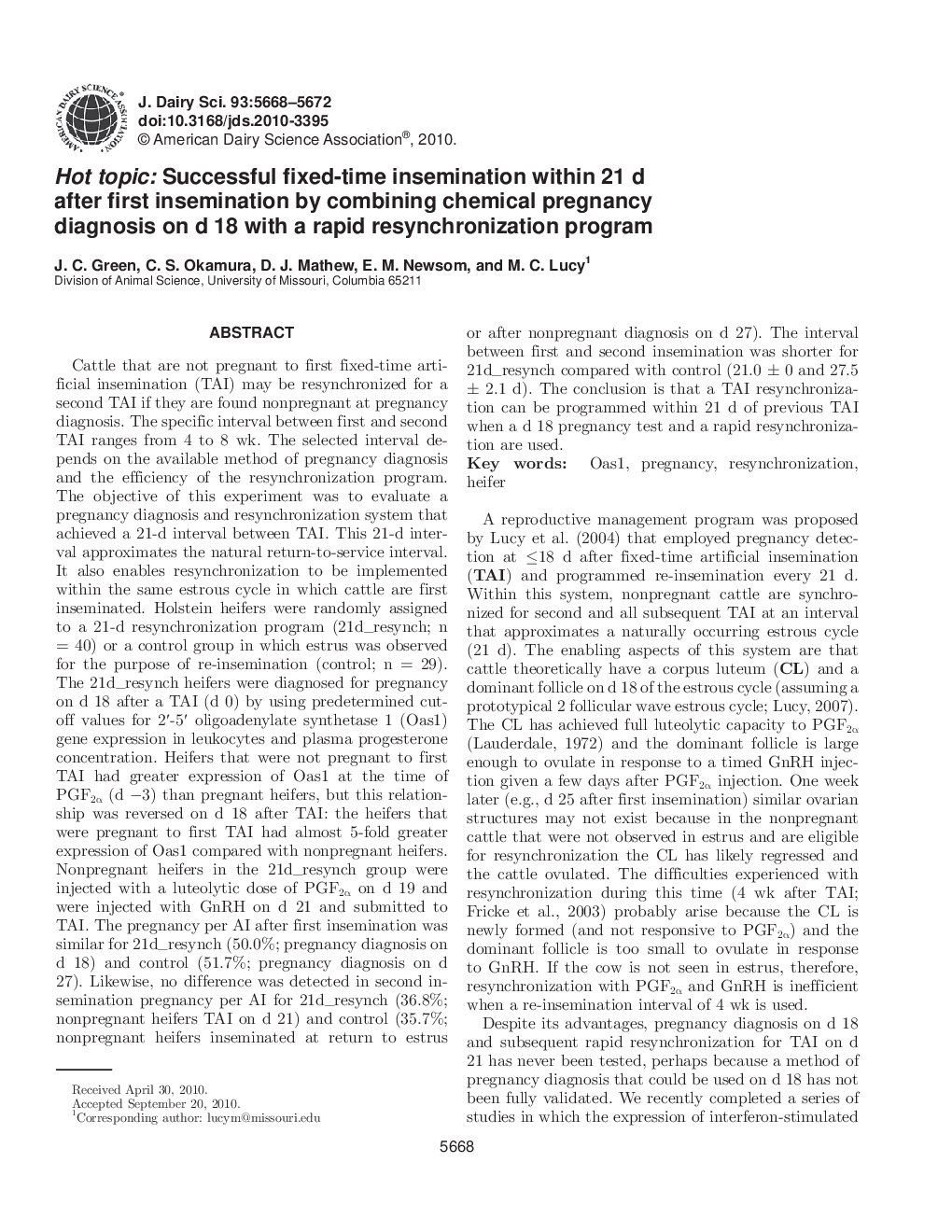| Article ID | Journal | Published Year | Pages | File Type |
|---|---|---|---|---|
| 10979166 | Journal of Dairy Science | 2010 | 5 Pages |
Abstract
Cattle that are not pregnant to first fixed-time artificial insemination (TAI) may be resynchronized for a second TAI if they are found nonpregnant at pregnancy diagnosis. The specific interval between first and second TAI ranges from 4 to 8 wk. The selected interval depends on the available method of pregnancy diagnosis and the efficiency of the resynchronization program. The objective of this experiment was to evaluate a pregnancy diagnosis and resynchronization system that achieved a 21-d interval between TAI. This 21-d interval approximates the natural return-to-service interval. It also enables resynchronization to be implemented within the same estrous cycle in which cattle are first inseminated. Holstein heifers were randomly assigned to a 21-d resynchronization program (21d_resynch; n = 40) or a control group in which estrus was observed for the purpose of re-insemination (control; n = 29). The 21d_resynch heifers were diagnosed for pregnancy on d 18 after a TAI (d 0) by using predetermined cut-off values for 2â²-5â² oligoadenylate synthetase 1 (Oas1) gene expression in leukocytes and plasma progesterone concentration. Heifers that were not pregnant to first TAI had greater expression of Oas1 at the time of PGF2α (d â3) than pregnant heifers, but this relationship was reversed on d 18 after TAI: the heifers that were pregnant to first TAI had almost 5-fold greater expression of Oas1 compared with nonpregnant heifers. Nonpregnant heifers in the 21d_resynch group were injected with a luteolytic dose of PGF2α on d 19 and were injected with GnRH on d 21 and submitted to TAI. The pregnancy per AI after first insemination was similar for 21d_resynch (50.0%; pregnancy diagnosis on d 18) and control (51.7%; pregnancy diagnosis on d 27). Likewise, no difference was detected in second insemination pregnancy per AI for 21d_resynch (36.8%; nonpregnant heifers TAI on d 21) and control (35.7%; nonpregnant heifers inseminated at return to estrus or after nonpregnant diagnosis on d 27). The interval between first and second insemination was shorter for 21d_resynch compared with control (21.0 ± 0 and 27.5 ± 2.1 d). The conclusion is that a TAI resynchronization can be programmed within 21 d of previous TAI when a d 18 pregnancy test and a rapid resynchronization are used.
Keywords
Related Topics
Life Sciences
Agricultural and Biological Sciences
Animal Science and Zoology
Authors
J.C. Green, C.S. Okamura, D.J. Mathew, E.M. Newsom, M.C. Lucy,
